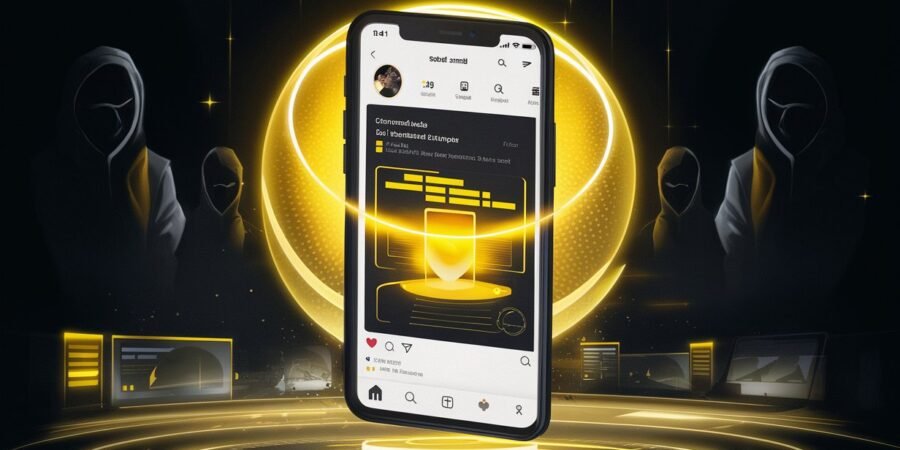Every day, millions of people scroll through social media, posting pictures, tagging locations, sharing achievements, and connecting with friends. It feels harmless and fun, but for cybercriminals, this endless stream of information is a treasure map. Your social media profile can quietly reveal more about you than you realize, making it easier for attackers to guess passwords, craft scams, or even steal your identity.
Let’s explore how this happens, what kind of data you may be unknowingly exposing, and most importantly, how you can protect yourself in today’s connected world.
The Hidden Value of Your Social Media Data
Cybercriminals do not need advanced hacking tools to get personal information. Often, they just need your Facebook, Instagram, or LinkedIn profile.
Small details; like your pet’s name, date of birth, favorite school, or workplace; can help attackers answer your password recovery questions or impersonate you online.
A cybercriminal can piece together your online identity step by step:
- Your birthday post gives away your date of birth.
- A “first day at office” selfie exposes your employer.
- Location tags show where you live or travel.
- Family pictures reveal names of relatives and close contacts.
Individually these seem harmless. Combined, they become powerful tools for social engineering attacks.
Real-Life Example: The Oversharing Trap
In one real-world case, a scammer built a fake profile pretending to be a senior HR executive at a multinational company. He used details taken from the actual employee’s LinkedIn account; including her job title, photo, and work history; to message new graduates offering fake internships. The victims trusted the profile because it looked authentic and even shared personal data like ID proofs and resumes.
This simple case shows how an innocent-looking social media post can turn into an opportunity for exploitation.
What Hackers Look For on Your Profile
- Personal Clues for Passwords: Many people use simple passwords like their birth year, pet name, or favorite team; all of which can be found on social media.
- Location Information: Frequent location tags or check-ins reveal your daily patterns, making it easier for stalkers or burglars to track when you are away from home.
- Professional Details: Posting about your workplace can lead to spear-phishing attacks, where hackers impersonate your boss or IT team to extract credentials.
- Friends and Family Information: Scammers use your connections to send trust-based scams such as “Hi, it’s me” messages that look like they come from someone you know.
- Device and Activity Data: Shared posts from fitness apps or photo metadata can reveal your exact coordinates, device type, and even the time of day you are online.
The Psychological Side of Oversharing
Humans naturally like to share moments and feel seen. Social media feeds that behavior, offering instant likes and validation. But cybercriminals exploit that emotional pattern. They rely on your impulse to share before thinking.
The more open you are online, the more complete your digital footprint becomes; and once that data is public, it is impossible to take back.
How to Fix It and Stay Safe
- Review Privacy Settings: Limit who can see your posts, profile details, and friend list. Make most of your information visible only to friends or trusted contacts.
- Avoid Sharing Sensitive Information: Skip posting your full birthday, address, or any identification-related details.
- Be Cautious with Photos: Turn off location tagging and review what background details might reveal (like your home address or vehicle number).
- Use Strong, Unique Passwords: Create different passwords for each platform and enable multi-factor authentication.
- Think Before You Post: Ask yourself! would I be comfortable if a stranger saw this post?
- Regularly Audit Old Posts: Remove outdated or unnecessary information that may still be publicly visible.
- Stay Alert for Fake Profiles: Report suspicious friend requests or accounts that seem to mimic someone you know.
Real-Life Scenario: Learning the Hard Way
A college student once posted about his upcoming solo trip abroad. He included the travel dates and tagged his location at the airport. Within days, his home was burglarized. The thieves were not random; they followed his posts to know when the house would be empty.
This case reminds us that even casual posts can have real-world consequences. Social media may feel like a safe bubble, but once you hit “post,” it enters a public space that never forgets.
The Takeaway
Social media is an amazing tool for connection and self-expression. But in the digital age, your profile is more than just a collection of photos and posts; it is a detailed identity card for anyone with the intent to misuse it.
Protecting yourself online is not about being silent, it is about being smart. Share thoughtfully, review your privacy, and remember that not everyone viewing your profile has good intentions.
Your data is your digital identity, treat it with the same care you give your physical one. Stay aware, stay secure, and let your social presence reflect confidence, not carelessness.
Visit Cybersense : Website | Instagram | LinkedIn | Facebook

